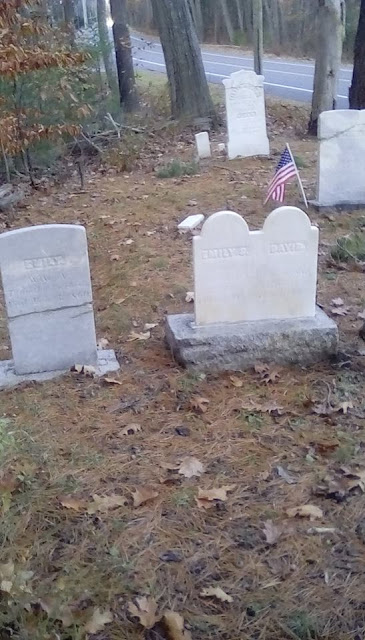It shouldn't surprise anyone that my favorite holiday is Halloween. All through October, I like to eat candy, watch horror movies and other Halloween favorites (like
Hocus Pocus and
Casper), listen to songs like "Thriller" and "Pet Sematary" and take in the decorations.
For the past years, the library has come to offer fun Halloween activities: the first time we had a Harry Potter marathon and decorated like Hogwarts, and last year we themed it on
The Witches and other Roald Dahl stories. This year I had a couple of ideas, but the one we decided to go with was one that would make the day's program more interactive. I have no problem at all with passive programming (movies and crafts) but we are constantly trying to assert that the library can be an educational resource in more ways than just encyclopedias.
So on Halloween we had a series of LARP scenarios that are based on the Salem Witch Trials. There are tons of LARP scripts and scenarios available for free online, so I used that as a guide. However, since I work in a public school, and we really wanted this activity to be fun, we steered clear of religious references and anything that was violent.
We chose two teachers from each grade, as well as our principal, and came up with 'charges' for them. Some of them were generic ones, like "he was seen frollicking in the woods" and some of them were a little more specific to the person or the content; the principal was accused to bewitching the minds of the community because how else could a woman have attained such a powerful position?.
A couple of days beforehand, we dressed ourselves in black robes, and went to the classrooms of the Accused Witches. We informed them that they have been accused of witchcraft, and instructed them to report to the Town Courthouse (our multi-purpose room) for arraignment and trial on All Hallow's Eve. We also posted notices on their classroom doors, to let everyone know of "the danger".
The teachers didn't know in advance, but we chose staff members whom we thought would be able and willing to play along.
At the time of their trials (grade level's study hall), the Accused were led into the Courthouse. We then called for decorum in the court (telling the students to be quiet), and proceeded to read the charges. We questioned them, using language and phrases pulled from classic literature such as
The Crucible and
The Witch of Blackbird Pond. A couple days earlier, I had emailed all the Accused a "cheat sheet" of 17th century language that they could refer to when defending themselves, and many of them got into it, uttering phrases like "I stand mute" and "'T'were all sport".
The students listened to the accusations, and also stood up and made some of their own. They listened to their teachers' defenses, and some of them even stood up to defend their teachers. After we went back and forth a while, we would call for three students to accompany us into Counsel, and decide the faten of the Accused. The students really like declaring them guilty, because they would get to also make up a punishment. The punishments were all silly: like being forced to bob for apples while washing someone's feet every day for the rest of one's life.
I know that a teacher go-to project for students is writing and performing skits, but I think middle-school is the perfect age to get our students to think more about what they are trying to learn from projects. Rather than just write a skit, memorize lines, and then act it out, they could be researching real people and events in history, thinking up scenarios that are appropriate (even if the scenarios are hypothetical) and then interacting with each other while portraying a historical figure. This requires that the students learn what a particular person (say, a former President) would think about issues such as class warfare, rights for various minorities, taxation, etc. Using their research, they would then have to base all their words, opinions, and mannerisms, maybe even dress, on the person they are portraying. The instructors would be the ultimate judges of how well-researched the roles were, and how much effort was put into the performances.
I had fun LARPing as a magistrate, and the teachers have also expressed to us how much fun it was to be cast in a role in which they had to "think on their feet", so I think the program was a success.










































